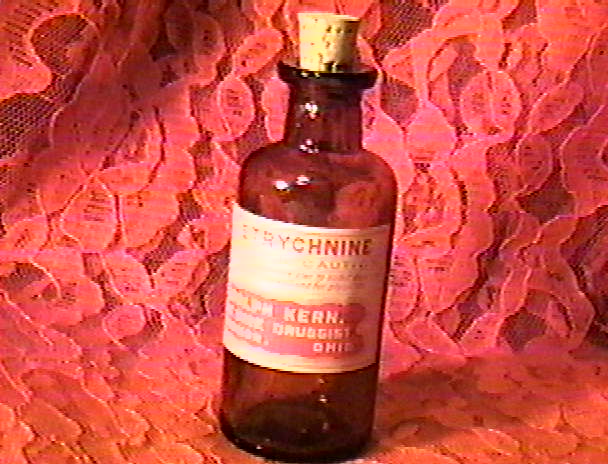
Here is a photo of a bottle of the poison, it was discovered in 1818, (Motion, 2000) even though
nux vomica, the unpurified plant extract in which it is the active component, had been known and
used for both medicinal and criminal purposes for some time. Early on it was thought to be good
in medicinal use. This was a misconception and although tested, was of little danger. It has a
very bitter taste and stimulates salivary and gastric secretion very strongly. This increases a-
ppetite, and was used to counteract the loss of appetite associated with illness, giving the im-
pression that strychnine had restorative properties. In fact, any constitutional improvement re-
sulting from the increased appetite would probably be outweighed by the harmful effects of stry-
chnine, and the underlying illness would be more or less unaffected. This is the same mechanism
that gives tonic water its apparent "tonic" activity, although in that case the bitter agent is quinine,
which is far less dangerous.